HO CHI MINH MINH (SAIGON), Vietnam
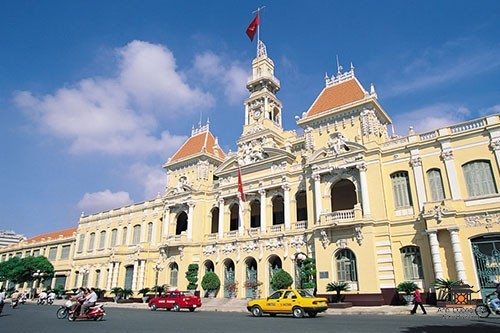
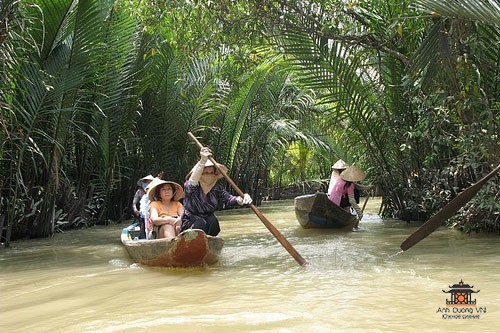
Ho Chi Minh City (Hồ Chí Minh)- the largest city in Vietnam, the economic center of the country. The population of the city is 5,700 thousand people. Area - 2 thousand square meters. km. Administratively, the city consists of 17 neighborhoods and 5 suburban districts. Ho Chi Minh City is located on the Saigon River.
Vietnam Airlines flights to Ho Chi Minh City from Moscow once a week (on Monday). Planes land at Tan Son Nhat Airport, located within the city. In turn, from Ho Chi Minh City you can get to any point in the country both by air and, in most cases, by rail. State Highway System 1A connects Ho Chi Minh City with the northern and Mekong Valley provinces, State Road 22 goes to Tay Ninh and connects Vietnam with Cambodia, State Road 13 through Song Bae connects with State Road 14, which extends to Tay Ninh Province, State Road 51 connects to Dong Nai and Ba Ria-Vung Tau provinces, State Road 50 goes to Long An, Tien Giang. In addition, many provincial roads connect the city directly with the surrounding provinces. In the near future, the Saigon - Can Tho high-speed highway, a road connecting Ho Chi Minh City and the south of the country, as well as the Saigon - Loc Ninh, Saigon - Vung Tau, Saigon - Can Tho railways will be built. Rivers serve as excellent transport arteries, connecting many remote areas. The Saigon River accepts sea vessels with a displacement of more than 20,000 tons.
CLIMATE

Ho Chi Minh City is located in a tropical climate zone. Two seasons are clearly distinguished - the rainy season and the dry season. The rainy season lasts from May to November, and the dry season lasts from December to April. The average annual precipitation is 1.979 mm. The average annual temperature is 27.5 degrees. At the same time, the temperature in the area never drops below 24 degrees and at the same time rarely exceeds 32 degrees, which allows tourists to visit this part of Vietnam all year round. Nature is generally merciful to Ho Chi Minh City: it is not threatened by typhoons and hurricanes that annually sweep over the provinces of Northern and Central Vietnam.

STORY
First of all, it should be noted that the historical name of the city is Saigon, and the city was named in honor of the Vietnamese leader only after the unification of Vietnam in 1976. But even now tourists, and often the Vietnamese themselves, habitually call the city Saigon. Saigon and the lands around it are relatively new Vietnamese territory. The Vietnamese arrived here only in the 16th century. Before this, the area around modern Ho Chi Minh City was inhabited by the Khmers, where their state of Funan was located. There were also many Chams here, whose state in the 11th-15th centuries. occupied what is now Central Vietnam. Since the 17th century, numerous Chinese have settled here to escape the Manchu troops. Due to the complex ethnic composition of the population, the origin of the name "Saigon" is still unknown. It is not very clear in which language its roots are hidden - in Vietnamese, Khmer or Chinese. According to one of the most common versions, the name of the river and the city named after it comes from the name of the kapok (cotton) tree growing in the vicinity and is literally translated as “kapok forest.” It is interesting that for the first year of the city’s existence, the Vietnamese consider not the date of the founding of the settlement (it is simply not known) and not the first written mention of it (the name Saigon has been found in chronicles since 1674), but the creation by General Nguyen Huu Canh, appointed ruler of the occupied Vietnamese in the Mekong Delta lands, Giadinh Prefecture. This event took place in 1698. Most recently, the city thus celebrated its three hundredth anniversary. In this sense, one can compare Saigon with St. Petersburg. As we will find out later, these two cities have other common features.
The city left its mark on history during the years of the largest peasant uprising of the Teishons (1771 - 1802). Giadinh Prefecture in this conflict took the side of the Nguyen family ruling in South Vietnam. It was in Zyading that the last representative of the family, Nguyen Phuc Anh (the future Emperor Gia Long), hid from the Tay Sons. Here he managed to gather the landowners' squads, capture the whole of Vietnam and found the last Nguyen dynasty in the history of Vietnam. It is interesting that in those years Saigon was the name given to the part of the city in which the Chinese lived; the Vietnamese settlement was called Bennge - Veal Landing. However, the Chinese became more and more numerous, they founded a huge market (in Vietnamese - Teulon) and this word supplanted the word Saigon, which later in the 19th century the French began to use to refer to the Vietnamese settlement of Bennge, and then the entire big city. The French captured these lands in 1859. In June 1862, a Franco-Vietnamese treaty was signed, according to which the province of Zia Dinh became the property of France. Thus began the colonial era in the history of the city. It was then, in 1862, that the French introduced the name “Saigon” into official circulation, displacing other names for the city. Saigon became their favorite city in the Far East. They sought to turn it into “Little Paris”, to give it the charm of the “Pearl of the Far East”. The development of Saigon was carried out in the style of colonial architecture. New straight boulevards with even rows of trees were laid out. And here we also see some similarities between Saigon and the Russian Northern capital. And finally, one more circumstance that brings the two cities together - both ceased to serve as the main city of the country after the communists came to power, moving their capitals from St. Petersburg to Moscow, respectively, and from Saigon (Hue was a purely nominal capital, the main city was certainly Saigon ) to Hanoi. In 1976, Saigon was renamed Ho Chi Minh City.
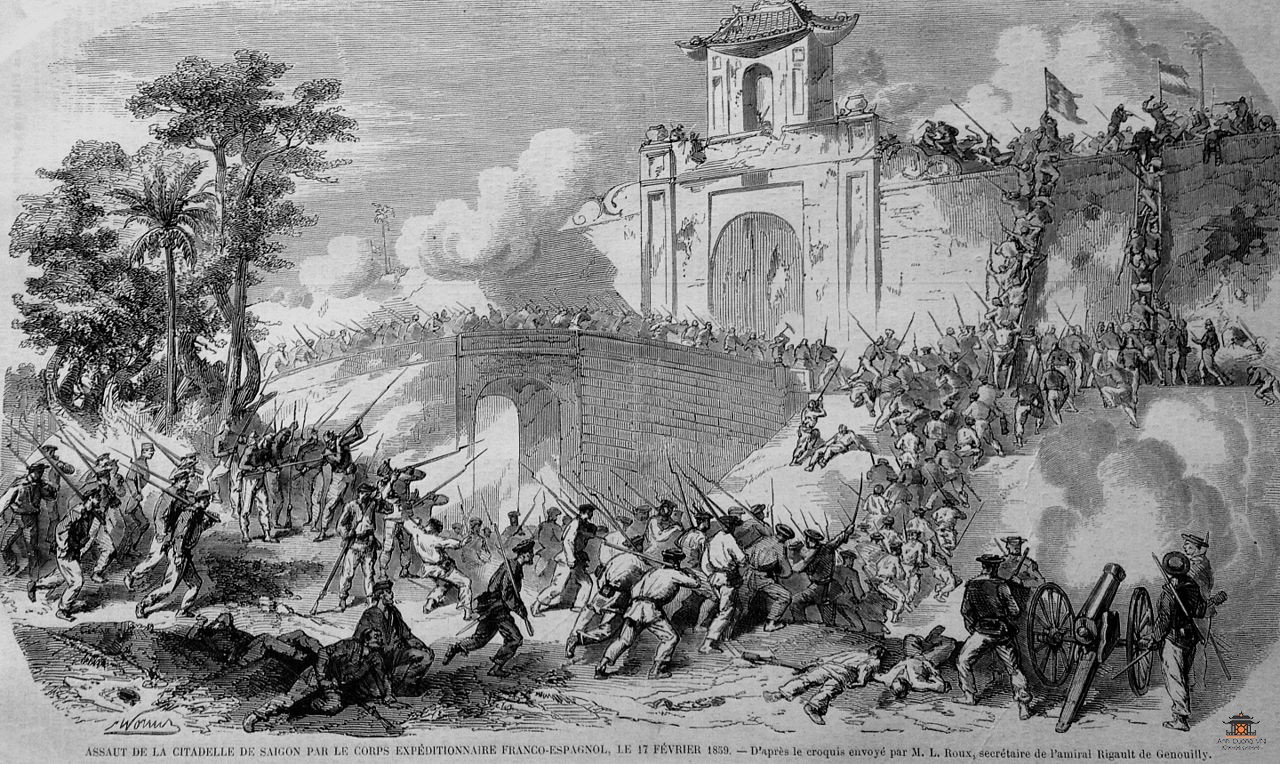
SIGHTS OF SAIGON
Reunification Palace- one of the central buildings of the city, located in a beautiful park. The site used to be the site of Norodoma Palace, named after the King of Cambodia, built by the French in 1873. In 1954, South Vietnamese President Ngo Dinh Diem chose this site as his presidential residence. After an attempted military coup, in which air forces were involved, the palace was completely destroyed. In 1962, the palace was rebuilt and named the Palace of Independence. In April 1975, North Vietnamese army tanks entered Saigon and stormed the palace, putting an end to the Saigon regime. The palace was renamed the Reunification Palace. However, the building itself, which was a symbol of the government of South Vietnam, and its interior furnishings were left virtually unchanged. The area of the Palace is approximately 12 hectares, the area of the building itself is 2000 m². In total, the Palace has 5 floors, including the lowest, 100 rooms, each of which has its own design features that are different from the others. On the left side of the main entrance, on the territory of the park, there is a Soviet tank, which rammed the gates of the palace and thereby announced the end of the war.
Cathedral of Our Lady of Saigon. Built by the French in 1877 - 1883. The facade of the cathedral is made in the neo-Romanesque style and is decorated with two forty-meter towers.
Vinh Nghiem Pagoda. Built between 1964 and 1971. designed by architect Nguyen Ba Lang. One of the buildings of the complex is a seven-tiered tower in a classical style. At the same time, the influence of Japanese architecture is felt - the pagoda was built with the assistance of the Japan-Vietnamese Friendship Association.
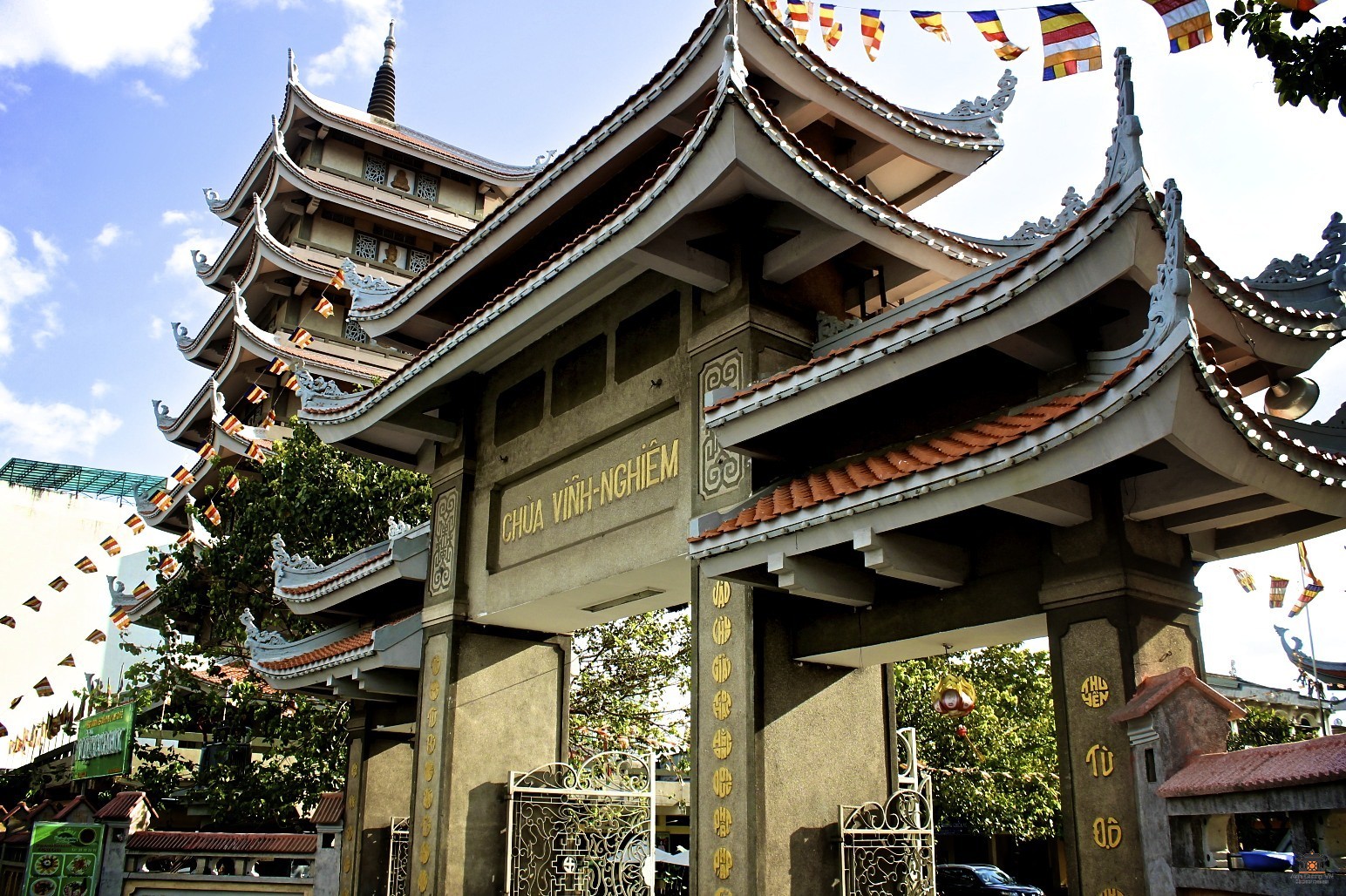
Gyak Vien Pagoda. Originally a simple thatched hut intended for the worship of the Bodhisattva, it was converted into the Giak Vien Pagoda in 1850. This working pagoda is a unique museum - its walls house more than 150 statues and engravings, most of which date from the late 19th - early 20th centuries.
City post office- another one of the buildings built in the colonial style. Built in 1863. Reconstructed in 1890. The building is decorated with a huge clock that has been preserved from that time.
Historical Museum of Ho Chi Minh City. The historical museum was built in 1929 and until 1956 was called the Blanchard de la Beauce Museum. During this period, the museum hosted several different exhibitions of ancient Asian art. In 1956, the museum was officially renamed the Saigon National Museum and finally, in 1975, after reconstruction and expansion, it became the Ho Chi Minh City Historical Museum. The museum's exhibits are divided into themes, each of which corresponds to a specific time period in the development of the state - from primitive times (approximately three thousand years ago) to the end of the reign of the last imperial Nguyen dynasty (1945). The museum contains a huge collection of ceramics, bronzes, baked clay, porcelain; clothing of emperors and officials; clothing and musical instruments of national minorities inhabiting Vietnam; bronze drums, gongs, etc.
The museum also presents the characteristic features of the southern region of Vietnam, incl. such as the Neolithic culture of Oc Yeo, the ancient culture of the Mekong Delta, the art of Champa, the art of Ben Nghe Saigon, the art of Vietnam's ethnic minorities, and ancient pottery from other Asian countries.
From numerous photographs you can trace the entire history of the city: from the first colonial buildings to the present day.

War Legacy Museum- a very instructive reminder of the country's bloody era. The museum was founded in September 1975. It presents many facts, photographs and paintings documenting the far from heroic activities of the US Army in Vietnam. Horrifying exhibits illustrate the massacre of civilians, the spraying of toxic defoliants, the torture of prisoners and the consequences of the war in northern Vietnam. Planes, tanks, bombs and helicopters are also on display. Over the past 20 years, the museum has been visited by more than six million guests. Of these, almost one million are foreign tourists, including Americans.
Teulon Chinatown- an area of compact residence of the Chinese who settled in Saigon in the 17th century. Here, while in Vietnam, you can visit China and get acquainted with its culture, customs and cuisine.
NEIGHBORHOOD
Cuchi Tunnels- underground fortifications, camouflaged in the tropical forest, intended to deliver unexpected attacks on the enemy during the year of the Resistance War against France (1946-1954) and the USA (1964 - 1973). Located 70 km northwest of Ho Chi Minh City. The total length of the tunnels is more than 200 kilometers. The width of the underground tunnels is approximately 60-70 cm, the height is 80-90 cm - enough to walk through, hunched over, one at a time. There were also wider areas that made it possible for two people walking towards each other to separate. “Ceilings” with a thickness of 3 to 4 m could withstand tanks weighing 50 tons and attacks from artillery and light bombs (100 kg or less). The system of underground “villages” included main and secondary “roads”, common and private rooms, rooms for the wounded, wide “halls” for general meetings and cultural events, etc. They lived underground, worked, gave birth to children, worshiped their ancestors... Next to the tunnels there is a shooting range where you can shoot with various types of weapons.
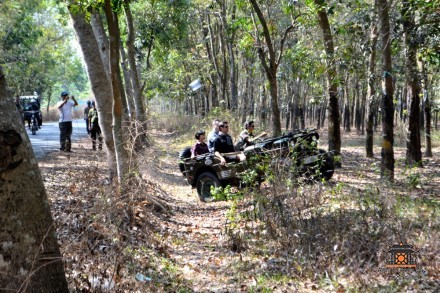
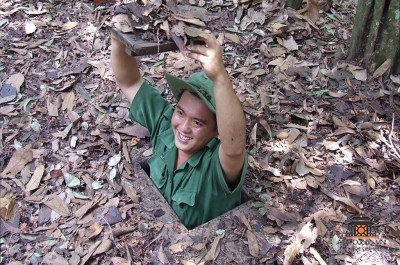
Mekong Delta. Another name for the river is the Nine Dragons River. Shortly before it flows into the sea, the Mekong is divided into 9 branches, which the Vietnamese respectfully compared to a mythical creature. The Mekong Delta is an amazingly vibrant and diverse world where you can see the diversity of South Vietnamese rural life. Of particular interest are the floating markets, which consist of many boats gathering in one place on the river. The closest city in the delta to Ho Chi Minh City is My Tho.
Mangrove forests of Kanzo (Wamsat). They are located in the Kanzo region, at the mouth of the Saigon River, 50 km southeast of the center of Ho Chi Minh City. Now the mangrove forest area, destroyed during the war, covering a huge area of 33,000 hectares, is being revived and actively developed. In this area, a World Biosphere Reserve has been created, the importance of which is recognized by UNESCO, and an eco-tourism zone that attracts many tourists. Having covered exactly 53 km from the city center, you arrive in Kanzo - the kingdom of forests and water, immersing yourself in the cool nature of the forest and sea. Here along the riverbed live more than 70 species of animals, more than 130 species of fish, 9 species of amphibians, more than 30 species of reptiles, including several rare species of crocodiles listed in the Red Book, almost 130 species of birds and 18 species of mammals.
Climbing the Tangbong Tower, which is more than 25 m high, you will be able to take in the entire Wamsat mangrove area - a vast sea of greenery, in the depths of which so many wonders of nature are hidden...
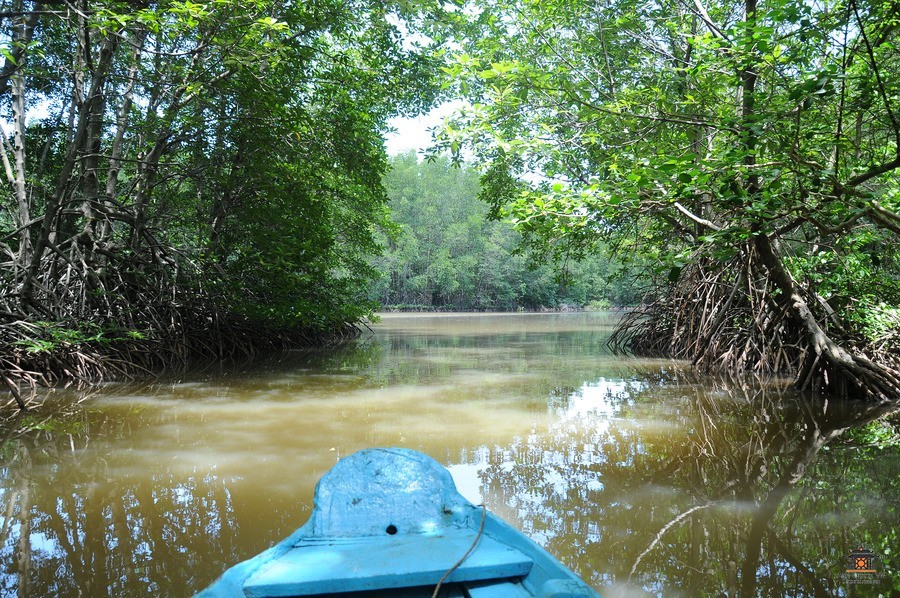
ENTERTAINMENT
Zoo and botanical garden. One of the most famous places in Ho Chi Minh City is the zoo, or Botanical Garden, one of the oldest in the world. The Botanical Garden of Ho Chi Minh City is the 8th oldest in the world. Its construction began in March 1864 on a site of only 12 hectares next to the Zatlang River (northeast of Saigon) under the leadership of the French scientist and researcher of tropical flora J.B. Louis Pierre. Construction was completed in 1865. A huge number of valuable plant species were planted in the garden, both of Vietnamese origin and imported from India, Thailand, Laos, Cambodia (Kampuchea), such as cocoa, coffee, vanilla, rare varieties of sugar reed... Many species of rare and exotic animals were brought here. In November 1927, the French built the Temple of Memories here, the architecture of which is reminiscent of the imperial mausoleums in Hue. On the top floor of the temple there was a large library.
Having survived the Japanese aggression of the 40s of the twentieth century, the war of resistance against the French and Americans and the constant change of authorities associated with them, the Botanical Garden of Ho Chi Minh City currently remains one of the favorite vacation spots for children and adults, local residents and visiting guests. Thousands of plant species, hundreds of animal species (tigers, crocodiles, elephants), birds, insects are collected here... In addition, there is an entertainment area for children and adults.
Dame Saint Park: Lotus Lake Park. The largest cultural and entertainment center of the city is able to offer recreation for every taste: the infrastructure of the park, divided into 30 sections, includes dozens of types of entertainment venues, restaurants and show programs. Places worth visiting include a miniature version of Giak Vien Pagoda, a lake similar to Hanoi's West Lake, a puppet show, a bird garden, a water park, a dinosaur park, a sports center and the Nam Tu Royal Garden. Here in the tropics you can visit...an ice city with sculptures of famous architectural objects of the world.
Municipal Theater. Located on Dong Hoi Street, the Municipal Theater is in the heart of Ho Chi Minh City, next to the Caravelle and Continental hotels. It was built at the end of the 19th century and later, in the 1940s of the 20th century, underwent reconstruction. The three-story building can accommodate one thousand eight hundred spectators. The theater is built in French colonial style, with spatial ventilation and modern sound and lighting systems. Cai Luong Theater performances are staged here, South Vietnamese traditional folk song festivals, ballet and opera performances performed by various foreign and Vietnamese artists are held.
Qui Hoa tourist recreation area. Located in the center of Ho Chi Minh City, it occupies a vast area of 14 hectares. Qui Hoa offers a park, a market, modern hotels and a wide range of restaurants. This includes the largest theater in the city, Hoa Binh. The Qui Hoa recreation area is divided into two parts, which are connected by a picturesque bridge. There are many types of entertainment and recreation here, including yacht trips, train rides around the lake, a small zoo and aquarium, a video game salon and roller skating. More recently, the Doi Hoa Vang auditorium with more than 1,000 seats was built near the lake, which hosts various cultural events, international dance festivals and fashion shows.
Walk along the Saigon River. You can take a yacht or boat ride on the Saigon River. The Saigon River runs through the entire city. A walk along the river will give you the opportunity not only to admire the scenery and relax in the cool river air, but also to see the entire process of formation of this area: from small coconut groves on river sediments to modern skyscrapers; from small marinas crowded with junks from the western provinces, filled with vegetables and fruits, to the largest port in Vietnam, Saigon, which receives ships from all over the world.
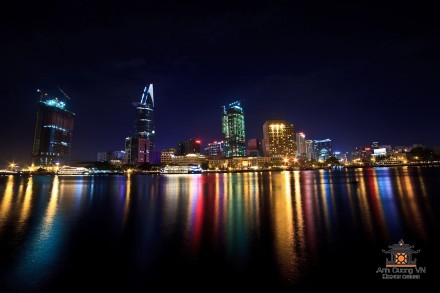
Central streets of Saigon. The area of Le Loi Avenue from the Rex Hotel to the central city market of Ben Thanh traditionally attracts tourists. There are many shops selling souvenirs, lacquerware, watches, belts, stationery, as well as cafes that cordially invite you to relax in the coolness with a cup of coffee, a portion of ice cream or a glass of freshly squeezed juice. Ben Thanh Market is famous for its abundance of goods, especially handicrafts and ready-made clothing. If anyone wants to take a look at the whole city from above, welcome to the bar on the top floor of the Caravella Hotel. Alternatively, you can stroll along the Dong Khoi Road area from Notre Dame Cathedral to Bach Dang Pier.
Bowling. There are several centers in the city where you can play bowling, which has recently become so fashionable. Noteworthy are the Diamond Superbowl entertainment center on Le Duan Street, as well as the Saigon Plaza shopping center, on the fourth floor of which the Powerbowl is located (Le Thanh Ton Street).
